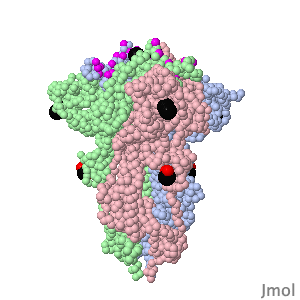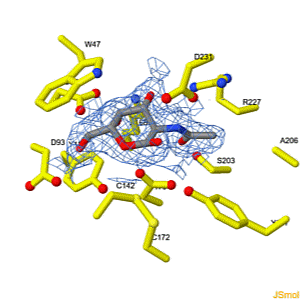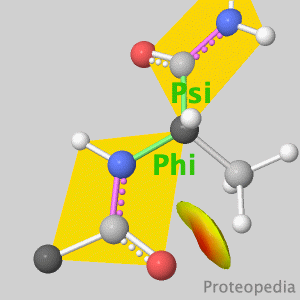Sandbox Home
From Proteopedia
| Line 1: | Line 1: | ||
| - | <table id="tableColumnsMainPage" style="width:100%;border:2px solid #ddd;border-collapse: collapse;table-layout: fixed; " | + | <table id="tableColumnsMainPage" style="width:100%; border:2px solid #ddd; border-collapse:collapse; table-layout:fixed;"> |
| - | + | ||
| - | + | ||
| - | < | + | <!-- HEADER --> |
| - | <b> | + | <tr> |
| - | </ | + | <td colspan="3" style="background:#F5F5FC; border:1px solid #ddd;"> |
| + | <div style="position:relative; top:0.2em; font-size:1.2em; padding:5px 5px 5px 10px; float:right;"> | ||
| + | <b><i>ISSN 2310-6301</i></b> | ||
| + | </div> | ||
| - | <span style=" | + | <span style="display:block; margin:0; padding:0.3em; color:#000; font-style:italic; font-size:1.4em;"> |
| - | <b> | + | <b>As life is more than 2D</b>, Proteopedia helps to bridge the gap between 3D structure & function of biomacromolecules |
| - | </span> | + | </span> |
| + | <span style="display:block; margin:0; padding:0.3em; color:#000; font-style:italic; font-size:1.1em; max-width:80%;"> | ||
| + | <b>Proteopedia</b> presents this information in a user-friendly way as a <b>collaborative & free 3D-encyclopedia of proteins & other biomolecules.</b> | ||
| + | </span> | ||
| - | </td></tr> | + | <div style="clear:both;"></div> |
| + | </td> | ||
| + | </tr> | ||
| - | <tr> | + | <!-- COLUMN HEADERS --> |
| - | <th style="padding: 10px;background-color: #33ff7b">Selected Research Pages</th> | + | <tr> |
| - | <th style="padding: 10px;background-color: #f1b840">In Journals</th> | + | <th style="padding:10px; background-color:#33ff7b;">Selected Research Pages</th> |
| - | <th style="padding: 10px;background-color: #79baff">Education</th> | + | <th style="padding:10px; background-color:#f1b840;">In Journals</th> |
| - | </tr> | + | <th style="padding:10px; background-color:#79baff;">Education</th> |
| + | </tr> | ||
| - | < | + | <!-- SINGLE CONTENT ROW WITH LINKS AT TOP --> |
| - | < | + | <tr style="vertical-align:top; text-align:center;"> |
| - | <td style="padding: | + | <!-- LEFT COLUMN --> |
| - | < | + | <td style="padding:10px; vertical-align:top;"> |
| - | </ | + | <!-- Links --> |
| + | <div> | ||
| + | <p>[[Help:Contents#For_authors:_contributing_content|How to add content to Proteopedia]]</p> | ||
| + | <p>[[Proteopedia:Video_Guide|Video Guides]]</p> | ||
| + | <p>[[Who knows]] ...</p> | ||
| + | </div> | ||
| + | <!-- Featured --> | ||
| + | <div style="margin-top:10px;"> | ||
| + | {{Proteopedia:Featured SEL/{{#expr: {{#time:U}} mod {{Proteopedia:Number of SEL articles}}}}}} | ||
| + | </div> | ||
| + | </td> | ||
| - | < | + | <!-- MIDDLE COLUMN --> |
| - | <td style="padding: 10px; | + | <td style="padding:10px; vertical-align:top;"> |
| - | < | + | <div> |
| - | < | + | <p>[[I3DC|About Interactive 3D Complements - '''I3DCs''']]</p> |
| - | </ | + | <p>[[Proteopedia:I3DC|List of I3DCs]]</p> |
| + | <p>[[How to get an I3DC for your paper]]</p> | ||
| + | </div> | ||
| + | <div style="margin-top:10px;"> | ||
| + | {{Proteopedia:Featured JRN/{{#expr: {{#time:U}} mod {{Proteopedia:Number of JRN articles}}}}}} | ||
| + | </div> | ||
| + | </td> | ||
| + | <!-- RIGHT COLUMN --> | ||
| + | <td style="padding:10px; vertical-align:top;"> | ||
| + | <div> | ||
| + | <p>[[Teaching strategies using Proteopedia]]</p> | ||
| + | <p>[[Teaching_Scenes%2C_Tutorials%2C_and_Educators%27_Pages|Examples of pages for teaching]]</p> | ||
| + | <p>[[Help:Contents#For_authors:_contributing_content|How to add content to Proteopedia]]</p> | ||
| + | </div> | ||
| + | <div style="margin-top:10px;"> | ||
| + | {{Proteopedia:Featured EDU/{{#expr: {{#time:U}} mod {{Proteopedia:Number of EDU articles}}}}}} | ||
| + | </div> | ||
| + | </td> | ||
| + | </tr> | ||
| - | < | + | <!-- BOTTOM NAV BAR --> |
| - | + | <tr> | |
| - | + | <td colspan="3"> | |
| - | + | <table width="100%" style="padding:10px; background-color:#d7d8f9; font-size:1.5em;"> | |
| - | + | <tr> | |
| - | + | <td>[[Proteopedia:About|About]]</td> | |
| - | + | <td>[[Special:Contact|Contact]]</td> | |
| - | + | <td>[[Template:MainPageNews|Hot News]]</td> | |
| - | + | <td>[[Proteopedia:Table of Contents|Table of Contents]]</td> | |
| - | + | <td>[[Proteopedia:Structure Index|Structure Index]]</td> | |
| - | < | + | <td>[[Help:Contents|Help]]</td> |
| - | + | </tr> | |
| - | + | </table> | |
| - | + | </td> | |
| - | + | </tr> | |
| - | + | ||
| - | + | ||
| - | + | ||
| - | + | ||
| - | + | ||
| - | + | ||
| - | + | ||
| - | + | ||
| - | + | ||
| - | <table width= | + | |
| - | <td>[[Proteopedia:About|About]]</td> | + | |
| - | <td>[[Special:Contact|Contact]]</td> | + | |
| - | <td>[[Template:MainPageNews|Hot News]]</td> | + | |
| - | <td>[[Proteopedia:Table of Contents|Table of Contents]]</td> | + | |
| - | <td>[[Proteopedia:Structure Index|Structure Index]]</td> | + | |
| - | <td>[[Help:Contents|Help]]</td> | + | |
| - | </tr></table> | + | |
| - | </td></tr> | + | |
</table> | </table> | ||
Revision as of 16:13, 30 September 2025
ISSN 2310-6301
As life is more than 2D, Proteopedia helps to bridge the gap between 3D structure & function of biomacromolecules
Proteopedia presents this information in a user-friendly way as a collaborative & free 3D-encyclopedia of proteins & other biomolecules.
|
||||||||
| Selected Research Pages | In Journals | Education | ||||||
|---|---|---|---|---|---|---|---|---|
|
|
|
||||||
|
||||||||




